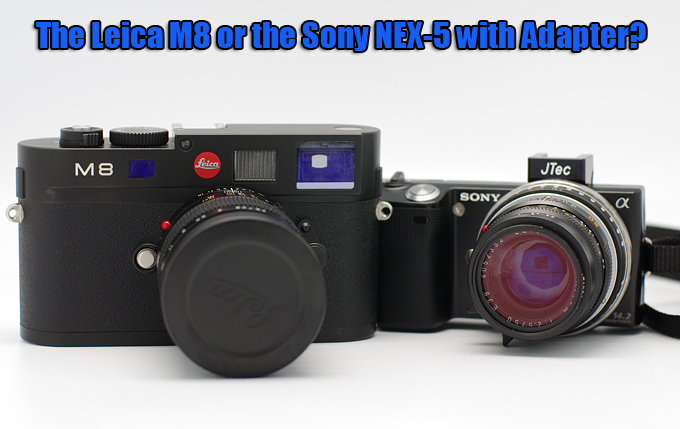
The Leica M8 vs The Sony NEX-5 with the Leica 50 Summarit Lens
Happy Monday to all, and again, Happy Holidays! Today I decided to do a quick comparison between two cameras that are still pretty hot. The Leica M8 and the Sony NEX-5. Many say the NEX-5 is a better buy than the older M8 because with the Sony you can use an Adapter to mount Leica M lenses and from what I have been hearing, many are saying that this yields better results than using the Leica M8. First off, shooting these cameras will bring you two TOTALLY different experiences. With the M8 I can shoot MUCH faster and with superb precision over the NEX-5 with the same lens via an adapter. The M8 is a rangefinder and the NEX-5 as we all know, is NOT.
I also know there have been articles here and there about the NEX-5 with Leica glass, but this time I wanted to see the NEX go head to head against the M8 in regards to image quality using the same lens.
So this comparison is only about image quality. Is the NEX-5 capable of better image quality than the M8? It does have more megapixels at 14 vs 10. It does have better high ISO performance as well but the M8 has the advantage (or so it seems) because it does not have an AA filter, so we should get more detail from an M8 shot than a NEX-5 shot with the same glass, right? Or is it ALL BOUT THE GLASS?
I wanted to find out! So thanks to SLR Magic who sent me their very well made Leica M to Sony NEX Adapter, I was able to try yet another Leica lens on my NEX-5. Also, thanks to Leica Dealer Ken Hansen I was able to shoot the M8 along with the 50 and 90 Summarit lenses. He sent them to me to try out for a while since I never reviewed the 50 or 90 Summarits lenses, so that was VERY cool of him! Ken seems to always have used M8’s in stock as well as the Summarit lenses, and he always has amazing service and prices. If you are looking for any new or used Leica, send him an email at khpny19@aol.com and he will get back with you pretty fast.
OK! On to the pics!
First, a straight comparison. These two images are full size files out of the camera from RAW. No PP involved. What do you see between the two?
First up, The M8 file…click on the image for the full size version – 50 Summarit at F4
now the file from the NEX-5 and 50 Summarit at F/4
In the images above it seems the NEX-5 edges are TEENY BIT softer than the M8 (when viewing the full size image at 100%) but the NEX-5 is still pretty detailed and sharp. This is not meant to be a good picture, just a test shot. Plus, it was mid day and the AZ sun is pretty hard. Still we can see the same image shot with each camera and the same lens.
–
Here is one more comparison between the two using the same 50 Summitar lens. In this one, the M8 file seems much sharper when viewing the full size file. Each camera has the 50 Summarit mounted and I shot these at f2/5
First the M8 file…
–
and the NEX-5 file…
In this one the M8 file is sharper and more vibrant with much more detail. This was all it took for me to see that the M8 is superior in regards to detail and even color. Also, the shooting experience for me was funner and faster with the M8. You do lose the high ISO capability, you lose the size advantage as the NEX is tiny, and you lose all of the whiz bang features of the NEX. Also, you would lose some cash. A used M8 is usually around $2200-$2600. Add the Summarit lens and you are at about $3600-$3800. The NEX-5 is $649 with a 16mm lens. Add adapter and lens and you would be at $2200 total. Still a load of cash huh?
One more quick “for fun” comparison…
First is from the Leica M8 with 50 Summitar at F/2
–
Now the NEX-5 with 50 Summarit at F/2.5
–
I did not add the M9 to this test because I usually see people comparing the NEX-5 to the M8. Yes the NEX can use Leica glass and YES it can provide awesome results, but the old M8 still stands above it just a bit for flat out IQ IMO. The NEX-5 and Leica glass combo is still pretty sweet though and the 50 Summarit lens is great on the camera. This is Leicas cheapest lens (that you can buy new) at about $1400 and it is a great little 50. It reminds me a little of the 50 Summicron but with a more modern signature. I still have not found a Leica lens I did not love 🙂
Below are a few more snapshots from both cameras.
NEX-5 – 50 Summarit – F/2.5
NEX-5 – 50 Summarit – F/2.5
Leica M8
–
Leica M8 at ISO 1250
–
Leica M8 and 50
Both camera combos offer great IQ and the Sony color can be very rich and deep when using Leica glass. But for me, the shooting experience goes to the Leica M8 and the overall versatility goes to the NEX combo. I like ’em both!
Again, thanks to Ken Hansen for sending me the M8 and lenses to try out for this test. I believe this used M8 that he sent me is for sale and it’s in perfect condition, box and all. If interested email him at khpny19@aol.com and ask him about the M8 I have right now. Ken is a great guy and he doesn’t pay me to mention him.
[ad#Adsense Blog Sq Embed Image]
PLEASE HELP TO SUPPORT THIS SITE TO KEEP IT GOING AND GROWING! I CAN’T DO IT ALONE!
Remember, anytime you follow my links here and buy from B&H or AMAZON, this helps to keep my site going. If it was not for these links, there would be no way to fund this site, so I thank you in advance if you visit these links. I thank you more if you make a purchase! I have nifty search bars at the upper right of each page so you easily search for something at either store! I currently spend 10-14 hours a day working on this site and the only way that I can pay for it is with your help, so thank you! Currently my traffic has been increasing but my funds to pay for the site has been decreasing, so any help would be GREATLY appreciated!
Even if you buy baby food, napkins or toothpicks at amazon it helps this site, and you do not pay anything extra by using the links here. Again, you pay nothing extra by using my links, it is just a way to help support this site, so again, I thank you in advance ![]()
If you enjoyed this article/review, feel free to leave a comment at the bottom of this page and also be sure to join me on twitter or facebook! Also, you can subscribe to my feed at my subscribe page HERE and read these posts in your browser or news reader!
Also, the new forums are NOW OPEN on this site so get involved if you like! Thanks so much for visiting my site!



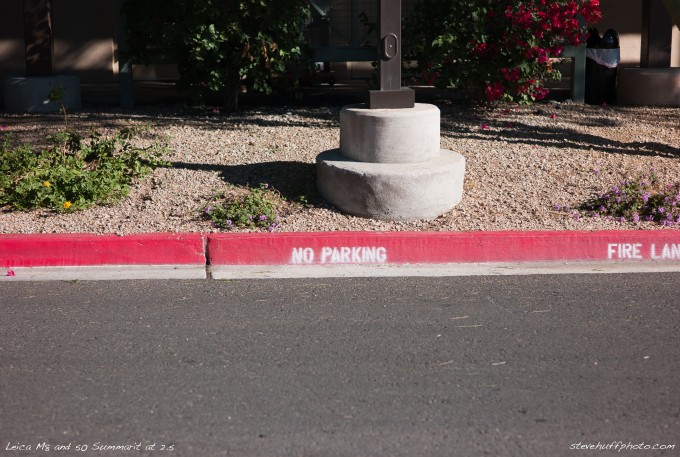
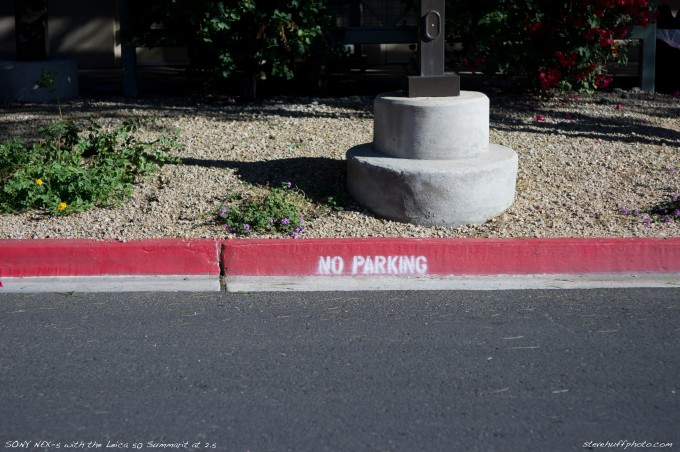




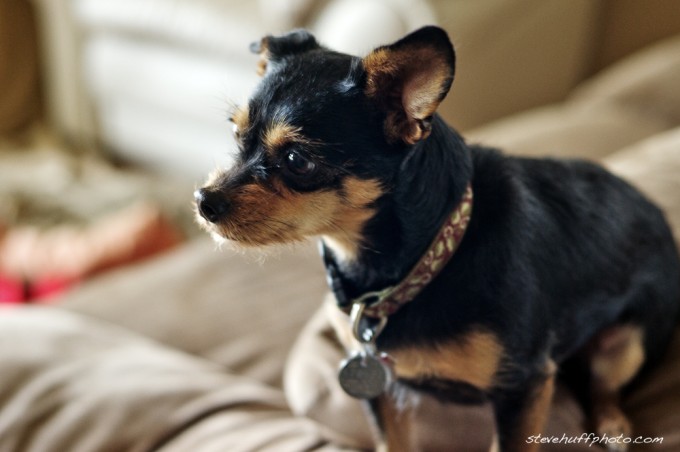
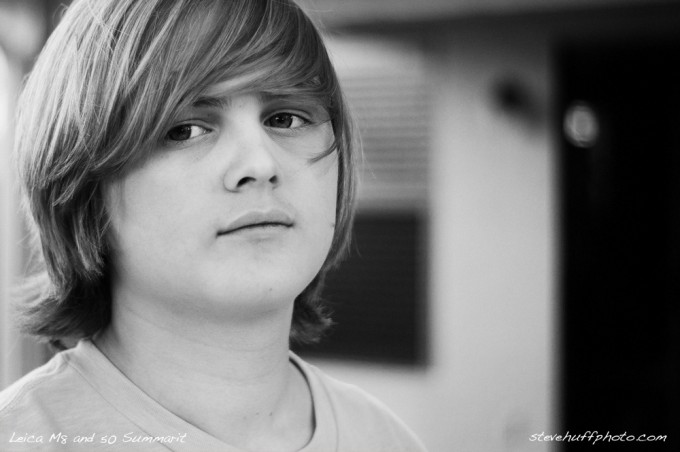

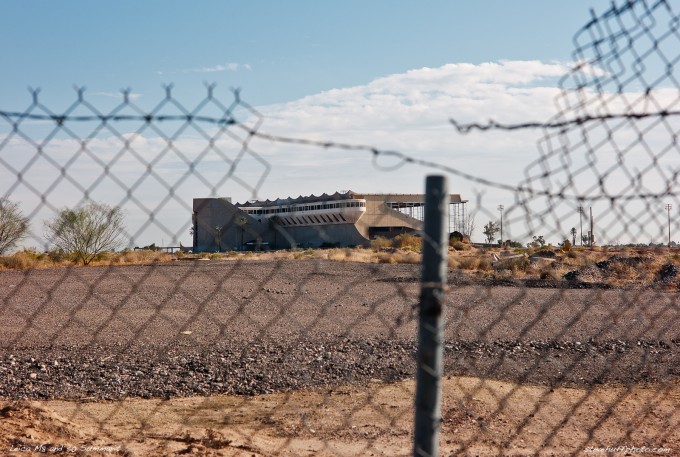


I have the NEX 5n and I can conclude the M8 has much better image quality despite the Nex 5n having more megapixels and better high ISO.http://www.google.com/url?sa=t&rct=j&q=leica%20m8%20vs%20nex%205n%20eleskin&source=web&cd=1&sqi=2&ved=0CE8QFjAA&url=http%3A%2F%2Fwww.rangefinderforum.com%2Fforums%2Fshowthread.php%3Fpostid%3D1928843&ei=jBkKUNGRG8S16wHy4cmrCg&usg=AFQjCNEYHsZ3E7eMo4b_q3pTOm99DZPHcA
That’s a disappointing review. The colors on the NEX are terrible. What does it look like if you set the NEX to vivid?
Glen (http://a4jp.com)
Hi everybody,
thanks for your article Steve.
I own a Sony NEX 5 + CV 35mm 1,4 and wondered myself why the images are not as sharp as I thought.
I am new to photography and maybe my question is stupid:
Is it possible to remove the AA Filter from pictures with a software or do I have to remove the filter from the NEX 5 sensor if I want sharper pictures?
Best regards
Martin
Thanks for the comparison Steve I’m considering both of these… I think if you’re buying the good Leica glass $600 more to have a NEX5 as an extra body is not that much more..
The EVF is nice but manual focus on my EP2 is a pain with all the info button presses. I use a 28 cron on my EP2 and it produces great daytime photos but I think I would like to try out a NEX with Leica lenses. Plus the DOF on the NEX you have to consider.
Interesting comparison but even better comments/discussion!!!
I wonder how will the upcoming NEX-specific Carl Zeiss 50mm perform … perhaps people will stop adapting all these manual legacy lenses onto NEX. Somehow I get the feeling that might be a more cost effective alternative than this.
Thank you for you’re review, I’ve was shooting with the Oly E-P1 with VC and vintage Nikon lenses when it first came out. I then got a E-P2 because of the E-Viewfinder which facilitated ease of focus with manual lenses. Recently, I picked up a used M8 and immediately fell in love. Shooting with an optical viewfinder is so much easier and faster especially in low light. After a year and half of shooting with the Oly’s I really love the cameras, they’re amazingly fun to shoot with and the bells are whistles great, but I realized after a month or so I rarely used any of the effects. The built-in stabilizer on the Oly is really good but it also made me a lazy shooter. With the M8 I find myself slowing down to compose a bit more and to hold the camera steadier. The NEX never really appealed to me because of the ergonomics of the design.
For me the M8 is the perfect camera for some one who loves to shoot with film/manual cameras but wants the connivence of digital/film-less photography (although my hands do tend to shake after drinking too much coffee, so I do miss Oly’s stabilizer).
Francis,
You say you are using your Biogon 21mm 90% of the time on your NEX. There have been many reports talking about the corner & edge color shift (fixable by Cornerfix) and corner edge smearing when using wide angel rangefinder lenses (28mm & less) on the NEX. They show up worst at wide open and when focus is set to infinity.
Are you not seeing these anomalies? Which Biogon are you using (f stop, camera mount)?
Thanks, Alan
Thanks for sharing,
This sumerizes my experience, I am touring Normandy and England for the Holliday using the NEX5 and Biogon 21mm 90% of the time. The Cron 35 has not found much use so far (a few snaps here and there). This is not an M8 or M9 but it is a mighty ;ittle package… Add an add-on EVF and Sony got a killer system…The best? Of course not but one you can enjoy with any of the lenses you like as far as it got an apperture ring… Cheers from UK, back to Canada early Jan.
I just took a second look at the images I noted above, and if you look at the high lights in the NEX image it appears that there is a slight amount of shutter bounce in this image, as the high lights are smeared vertically.
It appears to me when comparing the shots of the lamp post that there is a slight amount of mis-focus between the M8 and NEX shots. If you look at the foreground in front of the curb you will see that the image goes soft a small amount father into the street in the NEX image than it does in the M8 image.
I never pay much attention to color camera reviews myself. I always shoot RAW and the first thing I do once I get the imaging into Lightoom is adjust the white balance and color temperatures. I suppose a JPEG shooter or someone that doesn’t post process their images might care though.
I do wish Sony would make a 1.3x or even a full frame NEX though. 1.3x is a much better conversion factor for me than is 1.5x.
Thanks Steve. What lens would you take for holidays (landscapes, sport action, architecture, night shots), kind of allround? Somehow to replace the original 18-55. Thanks.
True, although not such a big deal on a $500 camera.
I would love to try a ZM 50/1.5. I can say that the Voigtlander 50/1.5 does a nice job on NEX.
Steve, thanks for the nice article. If money were no issue I would chose the Leica M8 out of these two, simply for the experience. I’m sure the Nex is a great camera too, but I just prefer the viewfinder framing and focussing compared to the LCD.
DF has a point here I think that it also hugely depends on the software you use in post and that many differences can be eliminated if you know your PP tools.
Thanks again for the article. Also thanks to Ken for providing Steve with these tools so we can all enjoy these posts!
also void your warranty…
So if the AA filter is the main cause of the difference, it begs the question, has anyone actually tried having their NEX anti-aliasing filter removed? Based on the comments posted so far, apparently not.
Pete Ganzel took his NEX apart to convert it to IR, and the disassembly is shown here:
http://www.pbase.com/pganzel/inside_the_nex_5
In the last photo, you can see that the IR filter is bonded to the AA filter. To do the AA removal conversion, this sandwich IR/AA filter must be removed & replaced with a single IR filter.
MaxMax does both IR conversions and AA removal conversions (they call it HR high resolution/hot rod) & their web site is:
http://www.maxmax.com/IRCameraConversions.htm
I wrote them & asked if they had done any NEX conversions & here is their answer: “We have not converted this model. We would need to open the camera to make sure we have the right size glass for it; we would only charge is the conversion was successful.”
If removal of the AA filter gets the NEX closer to the Leica in terms of real resolution, we would all be able to afford a mini cropped-sensor M9!!!
Happy New Year to all,
–Alan
Hi Steve, thanks for your great posts. I’ve read about rangefinder cameras, but I just can’t get it, I still don’t understand why they are so expensive and have such fame of being excellent tools, it would help me a lot if you made an explanation of what are rangefinders and why they’re considered to be that good. Thanks! 🙂
The Zeiss Sonnar 1.5 is one of my fave 50’s ever and I think it would be lovely on the NEX. I wish I had one to try it out.
armanius. color moire doesnt manifest itself the same way as the more obvious pattern moire. At first I never thought I saw it but after a while, I noticed it more and more. It isnt always obvious but present more often than I had orignially thought. Moire is less of an issue Ive found when I use LR3. It automatically fixed many of the issues, hot pixel and pattern moire included. Not always perfectly but it does a good job
Thanks for the explanation DF and Cluna. I haven’t seen any photos from my M9 that had moire on them. What I do notice if I dial up sharpening during PP in LR3.3 (whether it’s on a M9 or NEX file) is that I get more graining, which then requires me to dial up masking. So I’m not sure if sharpening during PP helps very much. Does it work better dialing up sharpening in-camera with JPGs as opposed to RAW files during PP?
Hi Steve, would nex 5 work well with Carl Zeiss 50mm – 1,5 sonnar?
Leica Sensor
• 27 x 18 mm CCD sensor (Kodak KAF-10500)
• 10.3 million effective pixels
• 11.2 million total pixels
• 6.8 x 6.8 µm pixel pitch
• RGB Color Filter Array
• Offset microlenses near frame corners
• No anti-alias filter (low pass filter)
• 1.33x FOV crop
Nex5 Sensor
• 23.4 x 15.6 mm Exmor APS HD CMOS Sensor
• 14.2 million effective pixels
Source dpreview.com.
Now the Nex5 sensor is smaller and has a larger density and a AA filter. The Leica has offset microlenses near frame corners.
Conclusion 1: The Nex5 sensor seams to produce soft results at the edges as was a gripe in the original dpreview testshots (my gripe that is)
Conclusion 2: The original sensor is less of a challange for the lens since it the resolution of the Nex5 is higher then the resolution of the M8
Conclusion 3: No AA filter means sharpening since an AA filter uncorrected does produce intentional whashed out results.
So I would suggest that you take a Nex5 shot and sharpen it up a notch. Then compare again. And I would suggest that the boys at Sony review their camera design and straighten out the corner issues this camera seems to be having.
Greetings, Ed
It’s precisely because of the difference in shooting experience, I personally see the NEX + Leica lenses more of a X1 replacement though.
An interesting comparison. Tiny NEX does a nice job. And therefore I use it as a backup (in the sense of a true spare tire) to the M9. The lack of EVF is one of the main drawbacks of the NEX. Accurately focusing longer/bulkier lenses, particularly fully open, with the camera hand held is not fun.
Nice results. I’m surprised the difference is so definitive. I knew there’d be a difference because if the AA filter, but such an obvious one… It’s quite a shock. Good work Steve!
the lamp post crop from the NEX seems significantly less sharp than i’m used to 100% crops looking from my NEX even without any sharpening. is it possible you miss focused? the only other thing i can think of is that the lens isn’t that sharp, but it looks like if you upscaled the m8 shot to the same magnification it would still contain more detail?
Thanks guys!
DF, recently I did a similar test between a D300s without AA and a Nex5 using the Nikon 24-70. The d300s won all around an it can be sharpened the same amount as the NEX image in post and be even sharper.
Steve, did you shoot the NEX with the IR filter in place? it seemed to be in place on you Nex photo. that would certainly be an optical detriment
Armanius, color moire is the main issue going AA less
I think if you re sized the Sony files to 10mp and sharpened appropriately they would have been damn close if not identical, hard to say though. That said I rather have a sharp file to begin with, its rather annoying having to sharpen every picture I ever take, id have the AA filter taken out of my camera if it didn’t void the 2 year warranty, and if I had the funds of course.
AA filters exist in order to prevent moire from happening in your image. I’ve owned cameras with and without AA filters, and, once sharpening is dialed in, the detail advantage of one over the other is slight.
Yours isn’t a test of what comes out of the camera (that is what DxO Mark does,) Steve. It’s a test of how Adobe renders the RAWs of two cameras using Adobe’s default values. Once you introduce a RAW converter into the mix, demoisacing, WB application, color profiling, default sharpening, etc. vary wildly from each RAW converter maker. Sony files look even softer with the supplied Sony RAW converter…and they look sharper in Raw Photo Processor.
Any person that shoots RAW does sharpen outside of the camera, because it is built into most converters. You simply need to dial in the capture sharpness in Lightroom until both the M8 and NEX files are ideal.
If you’re not adjusting sharpening to fit the file, there is no reason to ever test detail between cameras with and without an AA filter, because the camera with the AA filter will always be at a disadvantage.
If the difference in detail that cameras with the same size sensor can render is the existence or lackthereof of AA filter, why do manufacturers see the necessity of placing AA filters? Shouldn’t Sony simply have left the AA filter out? Or would taking the AA filter off the NEX make the IQ worse?
Disclaimer: I know nothing about engineering of cameras.
Doesn’t matter what can be done with sharpening techniques. Lots of people who shoot for hobby don’t even sharpen outside of the camera. This was a test to show what comes out of each camera and thats it. Due to the lack of AA filter, the M8 will render more detail than the Sony sensor. Sure you can remove the AA filter from a NEX but very few will actually do this. Thanks for reading.
Current Sony CMOS sensors are quite a bit ahead of either of Leica’s M sensors in terms of technology and performance at the pixel level. Sony CMOS has superior dynamic range, high ISO, and the cfa is on par with, if not better than, the Leica. The only advantage that the Leica sensors have is size, and, in the M9’s case, that goes a long way.
All that this comparison really shows is the difference between a sensors with and without AA filters. Proper capture sharpening should bring the NEX files on par with the M8, and it isn’t a fair fight to compare files from both without a optimized sharpening routine. BTW, the NEX-5’s AA filter can be removed by those in the know, if someone is desperate to avoid a proper sharpening routine.
I am so glad you came out with the M8 on top Steve. If it had been the other way round and my wife had ever read the article my Leica love affair would have been history! This keeps my M9 dream alive.
yes, they produce some great shots, both of them. Comes down to what each person is looking for. For me, I want to manual focus using a split image/double image (whatever one wants to call it) the way a M focuses. Actually I like the split image focusing of a Nikkormat too. What I personally don’t like is having to focus manually by just looking at the image on the LCD or EVF. I just don’t feel comfortable doing it that way. It is not a eye sight issue either as I am lucky enough to have very good eye sight. Just a preference for the way the focus system works.
This is why I am so interested in the hybrid viewfinder of the upcoming Fuji X-100. Could this be the holy grail? That system (assuming it works the way I hope) in a M 4/3 body would be so attractive to me. Hell, put the M focus system on an GF1/NEX and it becomes interesting to me. Still don’t like the crop factor though. I tried a PEN EP-2 with adaptor and my 50mm and yikes, suddenly 100mm! I know things are different with larger sensor of the NEX and the M-8 but still… for those of us addicted to Leica glass (guilty), it is tough seeing your favorite 50 turned into a 75 or 100.
All that said, it is very cool to be able to use adapters to play with 50 year old glass on state of the art sensors. It is a great time to be a photographer!:)
Hi Zagato,
Yeah, I own up to it! 🙂 As much as I wish my NEX3 plus M lens, or EP2 plus M lens, would give me the same or comparable IQ that I get from the M9, they do not. Both the NEX3 and EP2 are great to handle using their native lenses, but not so great when using M lens. The EP2 is superior to the NEX3 in that sense, thanks to its excellent EVF. But manual focus with the M9’s OVF is soooooo much easier than even the EVF of the EP2.
Happy new year to you too!
Comparing two cameras with the same RAW adjustments can lead to questionable results. Color wise, you are more or less comparing Adobe’s profile for each camera. As far as detail, it would never be fair to compare AA vs. AA-less cameras unless you apply the appropriate amount of sharpening to each. Proper sharpening methods usually negate the advantage of AA-less cameras.
The shots of your son holding the ring show the NEX to be sharper, so I’m wondering how much of the differences are down to test discrepancies. In the landscape shot, were you focused to infinity? Did you use the lenses’ distance markings for the NEX focusing, or did you use live view? Were they both on a good tripod?
Thanks for the comparison shots Steve. The results are pretty much what I expected. I had a M8 for a couple of days and was very impressed at the pixel level sharpness that the M8 can deliver, more so even than the M9. A great asset of the M8 that often goes unnoticed is the M8’s 1/8000 max shutter speed, which is almost a must to shoot fast lenses wide open during daytime. That’s another thing the M8 has over the M9 (other than being much more affordable).
IMO, if someone wants pixel level sharpness in a small size body, there are more capable cameras out in the market such as the Ricoh and even the GF1 (shooting RAW at lower ISO). Well, maybe there’s no more GF1. Also, manual focusing on the NEX is nowhere as quick as using a rangefinder OVF. The strength of the NEX, as you have pointed out, is its compact size and very capable handling of high ISO (1600-6400), which IMO is better than the M8, GF1 and EP2.
Happy new year everyone!
Hey Steve, great review. I was wondering myself about what would happen if I tried a premium Leica lens on a smaller sensor in a so-called compact camera or similar four thirds etc.
Actually,I was going to pursue the question in a face off between the M9 and the GF1 or GF2. My expectation would be that you would come to similar conclusions as you have here in this comparison. Naturally, it’s interesting, because it shows what the camera/sensor can potentially do with top quality glass (assuming that the lens/adapter/camera combination is optimal optically?), but, what about all the other factors like weight, handling, general feel and not least overall effectiveness. It’s also somewhat odd to partner technology from two extremes of the price range. Still, I was also fascinated by the same question.
I wonder who else was toying with doing the very same thing? Come on – own up? 🙂
A Very Happy New Year to All